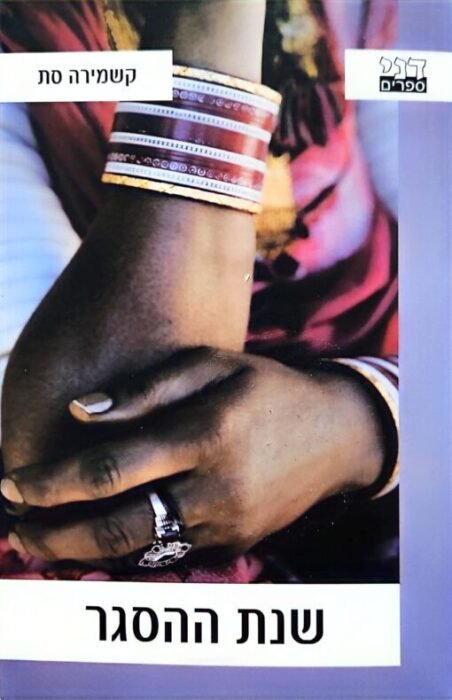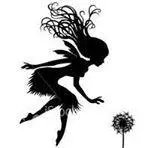Please scroll down for an English review.
שנת ההסגר, רומן היסטורי עדין ועוצמתי על לילה, ילדה בת 12 שהופכת לאלמנה ונאבקת לשחרר את עצמה ממנהגי הקסטות בהודו. סיפור על כאב, חופש ואמונה.
לילה, נערה צעירה הודית ששייכת לקסטת הברהמינים, עומדת בפני טקס האנו שלה – טקס שבו היא תעבור לבית החותנים שלה. היא בת 12 וכמקובל היא מאורסת מאז גיל שנתיים לבן זוגה המיועד שמבוגר ממנה רק במספר שנים.
כמו כל נערה צעירה היא מתרגשת לקראת הטקס ולקראת החיים שלה עם רמלל. היא רוכשת צמידים וסארי וכל משפחתה מתכוננת לאירוע המכונן. אולם, זמן קצר לפני האירוע, נחש מכיש את רמלל, הוא מת ובגיל 12 לילה הופכת לאלמנה.
בהתאם למנהגי הברהמינים (הקסטה העליונה בהודו), היא נדרשת לגלח את שערותיה, להסיר את תכשיטיה ועלטות בגד אבלות. במשך שנה היא לא תצא מביתה. היא לעולם לא תוכל להינשא שוב ולשארית ימי חייה היא תלבש בגדי אבלות וראשה יגולח.
בשנת האבלות לילה ומשפחתה לא יכולים להשתתף באירועים חברתיים כמו פסטיבלים וחגיגות. היא אמורה להסתגל למעמדה כאלמנה בשולי החברה ומשפחתה אמורה להסתגל לכך שלילה לעולם תהיה נטל על כתפיהם.
העלילה מתחילה בתקופת ההכנות לטקס האנו ומסתיימת חודשים ספורים לאחר תום סיום הסגר.
זוהי תקופה סוערת לא רק בחייה של לילה אלא גם של הודו. תקופה שבה מהטמה גנדי מוביל את תנועת העצמאות ההודית במאבקה לשיחרור מהמשטר הבריטי.
לילה קוראת על האירועים בעולם החיצוני, היא מחליטה לאמץ את הסאטיאגרה – חיפוש אחר האמת והתנגדות לא אלימה לעוולות. מסייעים לה במציאת הדרך אחיה והמורה שלה.
העוולות שנשים הודיות בכלל ובפרט אלמנות סופגות הן רבות ומגוונות.
החל מהאופן שבו מסמנים אותה באות קיין באמצעות גילוח הראש ובגדי האבלות, עובר דרך המאסר במשך שנה בביתה וכלה בגישה החברתית שדוחקת את האלמנה לשולי החברה והופכת אותה לנטל על משפחתה.
ישנו היגיון בשנת הסגר, כדי לאפשר ללילה להתרגל למצבה ולהימנע מחיכוך עם הסביבה. אולם, המסורת ההודית הפכה את זה לשיטה שפוגעת רק בנשים שכו נערים וגברים באותו המעמד לא נדרשים לקיים מנהגי אבלות חמורים כאלו.
אחיה של לילה שמבין את חוסר הצדק ורואה בגילוח הראש עוולה, משכנע את משפחתה לאפשר לה ללמוד למבחנים בשבת ההסגר. לילה בהתחלה אינה מבינה את התועלות שבלמידה אולם עם הזמן היא מפנימה שזו דרכה לעצמאות ושחרור מגורלה כאלמנה.
גם דרך זו רצופה אתגרים ומהמורות כאשר היא נדרשת לשכנע את אבי המשפחה לאפשר לה בתום שנת הסגר לנסוע ללמוד בסמינר למורות.
בפרקים הראשונים שסופרת עוסקת בחייה של הנערה פחות התחברתי לספר. ככל שהתקדמתי, העלילה והאירועים שאבו אותי. הקול של המספרת מבשיל ומתבגר: הסופרת עוברת מקול של נערה צעירה שעסוקה בצמידים וסיגנון השיער לאישה בוגרת שהעיסוק המרכזי שלה היא בדרך לעצמאות האישית שלה. במקביל האירועים ההיסטוריים תופסים תאוצה.
הסופרת בחרה בתמהיל מדויק המשלב בין אירועים היסטוריים במאבק של גנדי לעצמאות והמאבק הפרטי של לילה. בהקבלה ביניהם הסופרת מוסיפה עומק לעלילה.
נהנתי מהקריאה ומהשילוב של הסיפור ההיסטורי עם הסיפור הפרטי.
שנת ההסגר / קשמירה סת
דני ספרים, 2008, 236 עמודים
דירוג SIVI –
איכות אודיו –

Leela is a young girl from India who belongs to the Brahmin caste. At 12, she faces her Hanu ceremony, meaning she must move into her in-laws' house. Leela has been engaged to her intended partner since she was two years old, and he is only a few years older than her.
Leela, a young girl, is excited as she prepares for her upcoming ceremony and new life with her husband, Ramel. She purchases bangles and a saree, and her family prepares for the inaugural event. However, tragedy strikes when Ramelal is bitten by a snake shortly before the ceremony. He passes away, and at the age of 12, Leela becomes a widow.
As per the customs of the Brahmins, who belong to the upper caste in India, a woman must shave her hair, remove all her jewelry, and wear mourning clothes. She is expected to remain inside her house for an entire year. Furthermore, she is not allowed to remarry and will have to wear mourning clothes and have her head shaved for the remainder of her life after the year of mourning is over.
During the mourning period, Leela and her family are expected to abstain from participating in social events such as festivals and celebrations. As a widow, Leela is considered an outcast and has to adjust to her new position on the fringes of society. Her family also has to come to terms with the fact that they will have to bear the burden of supporting her for the rest of her life.
The story begins with the preparations for the Hanu ceremony and ends a few months after the mourning period.
This is a tumultuous time in India's history, marked by Mahatma Gandhi's leadership in the fight against British rule.
Leela learns about the events in the world and decides to embrace satyagraha – a pursuit of truth and non-violent resistance to injustice. With the help of her brother and teacher, she finds her way.
The injustices suffered by Indian women, especially widows, are numerous and diverse.
The text describes the difficult journey of a widow. It portrays the societal stigmas and challenges she faces starting from the moment she is marked with the letter 'Kane' to signify her status as a widow. It then highlights the various physical and emotional hardships she undergoes, such as having her head shaved and being forced to wear mourning clothes. The widow is then confined within her home for a year and is ultimately pushed to the fringes of society due to the prevalent negative attitudes towards widows. As a result, she becomes a burden on her family.
The tradition of mourning for a year has some logical reasoning behind it, as it allows the person grieving to adjust to their situation and avoid potential conflicts with their surroundings. However, this tradition in India is only expected from women. Men and boys of the same social standing are not required to adhere to such strict mourning customs.
Leela's brother empathizes with her injustice and opposes the head-shaving tradition. He manages to persuade their family to allow Leela to study for her exams, even on the day of mourning. Initially, Leela fails to realize the significance of education but gradually realizes that through it, she can attain independence and break free from her widowhood.
This path is full of challenges as she convinces the head of the family to let her go and study at a teacher's seminar after the mourning year ends.
At first, I found it hard to connect with the book as the author focused on the girl's life. However, I became more invested in the plot and events as the story progressed. I noticed a significant change in the narrator's voice as she transformed from a young girl interested in bracelets and hair styling to a mature woman determined to achieve personal independence. At the same time, the historical events in the book became more significant and captivating.
The writer skillfully weaves historical events in Gandhi's struggle for independence with Leela's private struggle, adding depth to the plot.
I enjoyed the combination of the historical and personal stories in the reading.
לגלות עוד מהאתר Sivi's Books
Subscribe to get the latest posts sent to your email.

